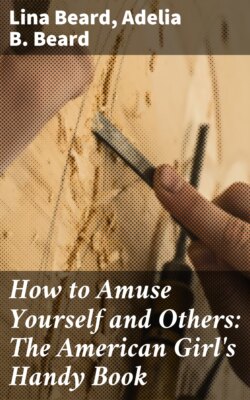Читать книгу How to Amuse Yourself and Others: The American Girl's Handy Book - Adelia B. Beard - Страница 43
На сайте Литреса книга снята с продажи.
Lawn-Tennis Court.
ОглавлениеTable of Contents
The best ground for this is turf, though it may be of asphalt, or earth mixed with fine gravel; sometimes wood is used.
The diagram on page 64 (Fig. 32) shows the construction of a lawn-tennis court for two, three, or four-handed games.
Lay out the court with a hundred-foot measuring-tape, by marking the lines with whitewash, chalk, paint, or plaster-of-Paris.
First the side line, seventy-eight feet, AB. This gives you one side of your court. Then the base line, thirty-six feet, AC, which, with their parallel lines CD and DB, form the boundaries of a court for four-handed games. Now lay off the side lines of the single court, EG and FH, which are parallel to the others and four and a half feet inside of them. Divide the court across the centre by the net, fastened to the poles O and P. The lines EF and GH are called base lines. Twenty-one feet from the net, mark the service lines, MN and TV. Then make the central longitudinal line, IJ, and the court is complete.
Now everything is prepared for the game. Hold your racket firmly, and try to keep the ball flying over the net, back and forth, as often as possible.
For the guidance of those who have had no opportunity of learning to play lawn-tennis the following rules are given, as adopted by the United States National Lawn-Tennis Association.
First, however, we would say that it is not necessary always to have an umpire or a referee, as spoken of in the
